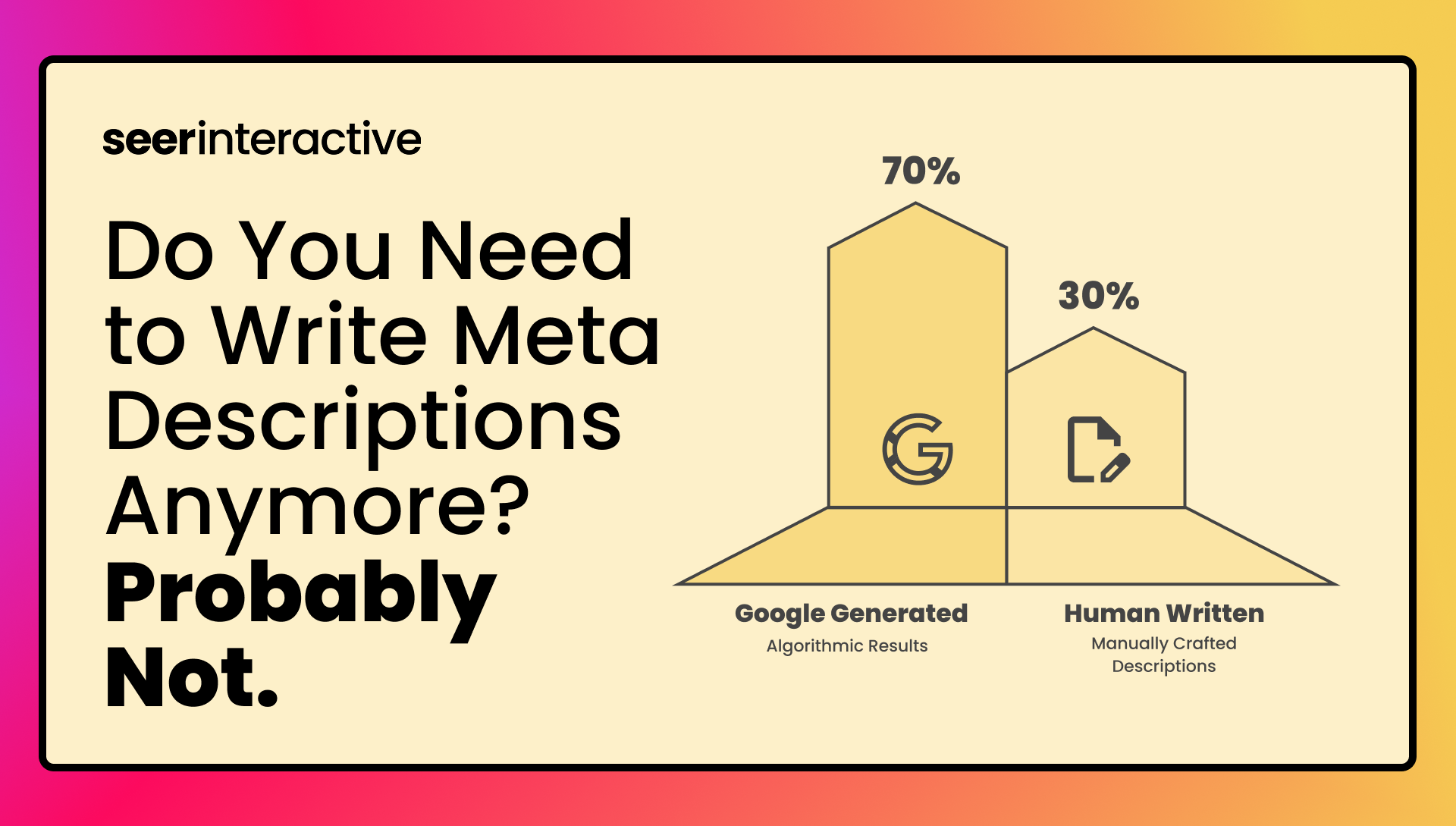Updated YouTube Video Lab
We've recently updated our YouTube Optimization tips in the form of a lab. Head on over for the latest and greatest in YouTube Digital Marketing:
VIEW UPDATED YOUTUBE VIDEO GUIDE
In this post, I'll share tips on how to optimize your videos and your Channel within the YouTube community to help increase your visibility within this search engine as well as help to increase your video’s visibility within Google search results.
First and foremost, create great content!
If you have interesting and unique content that can help answer a question, solve a problem, educate, entertain or create emotions, people could be more interested in watching an entire video. You should conduct keyword research or a content analysis to help come up with potential topics that your customers might be searching for or want more insight on.
Also, check out what your competitors are doing to engage their community through videos, and think of how you can incorporate their tactics but in bigger and better ways that speak specifically to your community.
When creating your video content, keep these simple tips in mind:
- A view only counts if a certain percentage of the video has been watched.
- Keep Video’s short – under 3 minutes ideally or long enough to get the point across (average watch length of a single internet video is 2.7 mins.)
- Don’t expect your video to go viral.
- Keep in mind quality of video, sound and script/wording.
Include appropriate keywords in the title of the video
YouTube is the 2nd largest search engine in the world. Make sure to include relevant keywords into the title of your video. This will help to get your video content found within other search engines and in front of interested users.
- Your video's title should be under 66 characters, to make it easier for Google search to display.
- If you want to include your brand name in the title, it should go last.
- Consider adding “Video” to the title to help with getting found.
- Keep the title engaging and descriptive; show user what exactly the video is about.
- Be sure to target keywords in the video file name and use the word “video.”
- You can always go back and change the title later. Try playing around with titles and keywords to see which maximizes your visibility.
Write a keyword-rich description that is detailed and informative
Point out what your video is all about and what makes it unique. Keep it simple, yet informative and detailed and put some keywords in.
- Write creative, compelling and informative descriptions about the video.
- A maximum of 800 words are allowed within the description.
- Only the first 25-30 characters are visible in YouTube Search results, so include your primary keywords and links at the beginning. Around two to three sentences more than the title is optimal.
- Include a link to your website, blog, and any other social channels.
- Put the URL at the beginning so that the user will see the link even if the “more info” option is collapsed.
Optimize YouTube Tags using relevant keywords
Tags are helpful in that they are used by search engines to position you in organic searches. They are also used by YouTube to associate your videos with others containing similar content.
- Tags can be up to 120 characters long, so use at least 10 tags.
- When tagging your YouTube video, think of unique tags that include your keyword phrases.
- Consider using your brand, city, and relevant topics.
- Use both plural and singular keywords.
- Using tagging with related topics and keywords can help your videos to appear under “related content” providing you with another way to reach viewers watching other videos or not actively searching for your content.
Transcribe your videos
Write a script and upload your transcript, which YouTube will then use that transcript to provide captions within the video. Captions can be indexed by Google and can maximize the ability for Google to understand what’s on the video, helping to improve the rankings of your videos. This also allows for your video to be available to the hearing impaired or anyone who cannot use sounds on their devices at any given time.
- Consider Using Speechpad to Transcribe Videos.
- Transcribe your video word for word and include relevant keywords into the script and speech within the video.
- Do not place the transcript within the description, but rather upload and disable the machine transcription.
- By using captions marketers will maximize the ability for Google to understand what’s on the video and as a result to improve SEO rankings.
Annotations
Video Annotations are a way to get viewers to engage with your videos and spend more time viewing your content. You can aim to get viewers to watch more videos, by linking to other videos in a series, or link to specific category or product pages on your site to learn more about topics mentioned within a video.
They can also help encourage users to sign up for business services or visit your social media sites. Annotations are suggested to remain on the screen at least for several seconds and you can now link off of YouTube to your site with Annotations if your account is verified.
- Add background information about the video.
- Create stories with multiple possibilities (viewers click to choose the next scene.)
- Link to related YouTube videos, channels, or search results from within a video.
- Create call-to-actions for sharing, visiting other pages, or commenting.
Optimize Your YouTube Channel
It’s better to publish on an established channel with engagement rather than uploading a single video to a new channel. It takes time to build an authoritative channel, but it’s worth it if you want your videos to rank. Think of your YouTube channel as another “blogging” source.
In order to create relevance, authority, and viewership, it’s important to create a daily or weekly schedule for adding new content. Be sure to post videos that help answer questions for your readers or provide exclusive insight into your business’ industry, services, or products.
Ensure Title is Descriptive for overall Channel:
- Use either your brand or key products for people to identify you.
Highlight Services or Products within Channel Description:
- Sell your brand and services or products to people.
Assign Tags to the Channel:
- Select a good range of keywords that are specific to your business.
List all social media outlets you use on your Channel Profile:
- Create a strong brand image using themes, photos, and showcasing all your social media channels onto the main page of your YouTube Account.
Create a weekly schedule for posting videos:
- Again, think of your channel as a “video blog” and create new content on a scheduled basis. This will help to increase your authority as you provide relevant video content that can be searched for by viewers.
Don’t Forget to Share and Embed Videos!
As per Hubspot, "Inbound links (links from other websites to your website or video) are important in traditional SEO. They are also important in YouTube SEO, considering that an embedded video (when a YouTube video's code is added to a website, displaying the video outside of YouTube) functions like an inbound link."
Don't have a website yet for your small business or personal portfolio? Learn how to create a website from our friends at WebsiteSetup here.
Share your video across all your social media channels
- Every time you post a video that’s relevant for general sharing, blog about it, tweet it, or add it to your Facebook page. Strong social signals help to add authority.
- Link up all your social channels to that your latest videos are automatically published and shared.
- Engage with the YouTube Community or with other companies that are relatable to yours.
- Include a call to action within your video such as an annotation added to the video or in the description that tells viewers to “like” or share.
Allow for Embedding from others and provide the code on your own site
- Embedding videos on your websites or a blog post will create a valuable way for other visitors to see the content within your site and can also increase your organic page results for specific terms within Google.
- This will also allow for more views to be generated across YouTube as viewers can easily access the video across multiple platforms.
- Allow others to embed your videos within their sites by allowing the code to be shared from the video’s page. (Turn on the embed option.)
- Within your YouTube analytics, you can see how many views each embedded video gets per site.
- Consider adding video schema markup to the page that will host your embedded video. This will create a snippet within the SERP’s for your targeted terms, so long as the video is highly relevant to those terms and tagged properly.
Comment, Engage, and Interact
- Just like you would on a blog post or your social media accounts, be sure to interact with your channels viewers by responding to comment or answering any questions.
- Consider also commenting and interacting with other companies or brands that may be relevant to your industry or the products/services you provide.
- YouTube is a community and the more you share quality content and engage with your viewers, the more you will be thought of as an authoritative member within the YouTube space.
Do you have any tips that you’ve implemented within your YouTube Channel that have caused positive results or better visibility within YouTube and Google? Any that you would suggest to avoid or that you noticed didn’t make a difference? Let us know!


